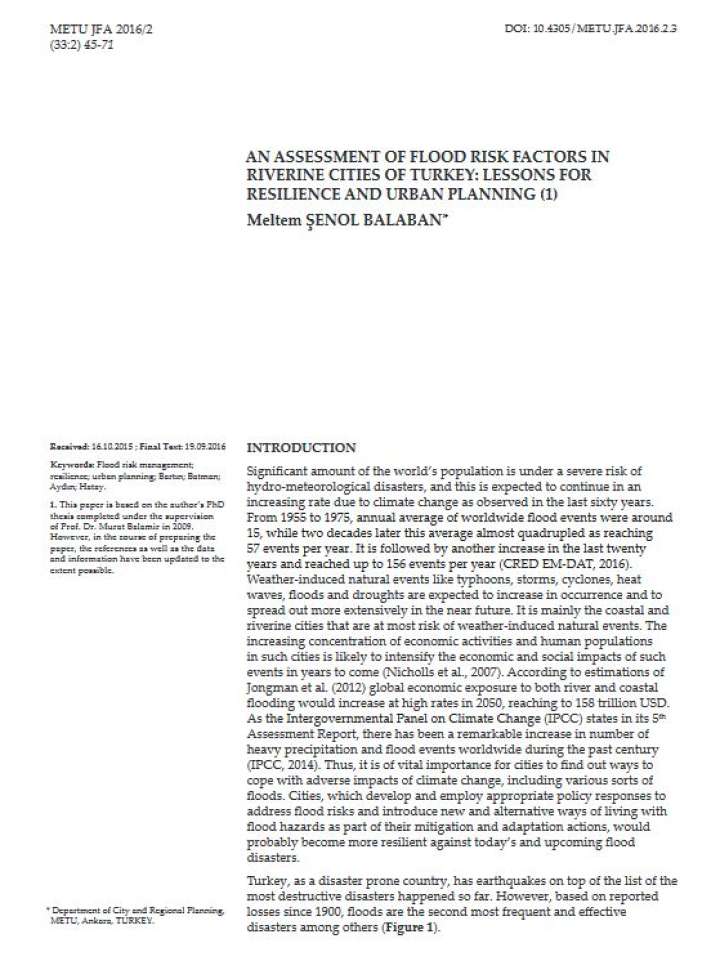An assessment of flood risk factors in riverine cities of Turkey: Lessons for resilience and urban planning
This paper aims to evaluate the main factors that contribute to the risk of flooding in riverine cities in Turkey, as well as to take some lessons for improving the existing system. It was based on a sample survey of four case cities; namely Bartın, Batman, Aydın and Hatay. Turkey’s river flood protection system is based on surveys and assessments of a central authority as well as its limited powers of intervention. The local governments, which are the closest units of public administration to flood risk areas, are under various pressures for development. However, it is crucial to integrate flood risk mitigation efforts with the local planning system and involve local governments in all stages of risk management starting from estimations of risks and determination of risk areas, as the contemporary international approaches point out.
Research findings indicate that river floods usually turn into destructive disasters in Turkish cities mainly due to improper land-use planning and management. Ad hoc and discrete land use development within and through the river basins results in serious and chronic flood losses. At the same time, the loose relationship between urban planning and flood risk management is another factor observed. Currently, urban development plans are not equipped with necessary measures to mitigate flood risks. More to the point, the illusory feeling of safety that originates from independent and discrete efforts of mitigation adds to flood vulnerabilities of city residents.
Explore further
